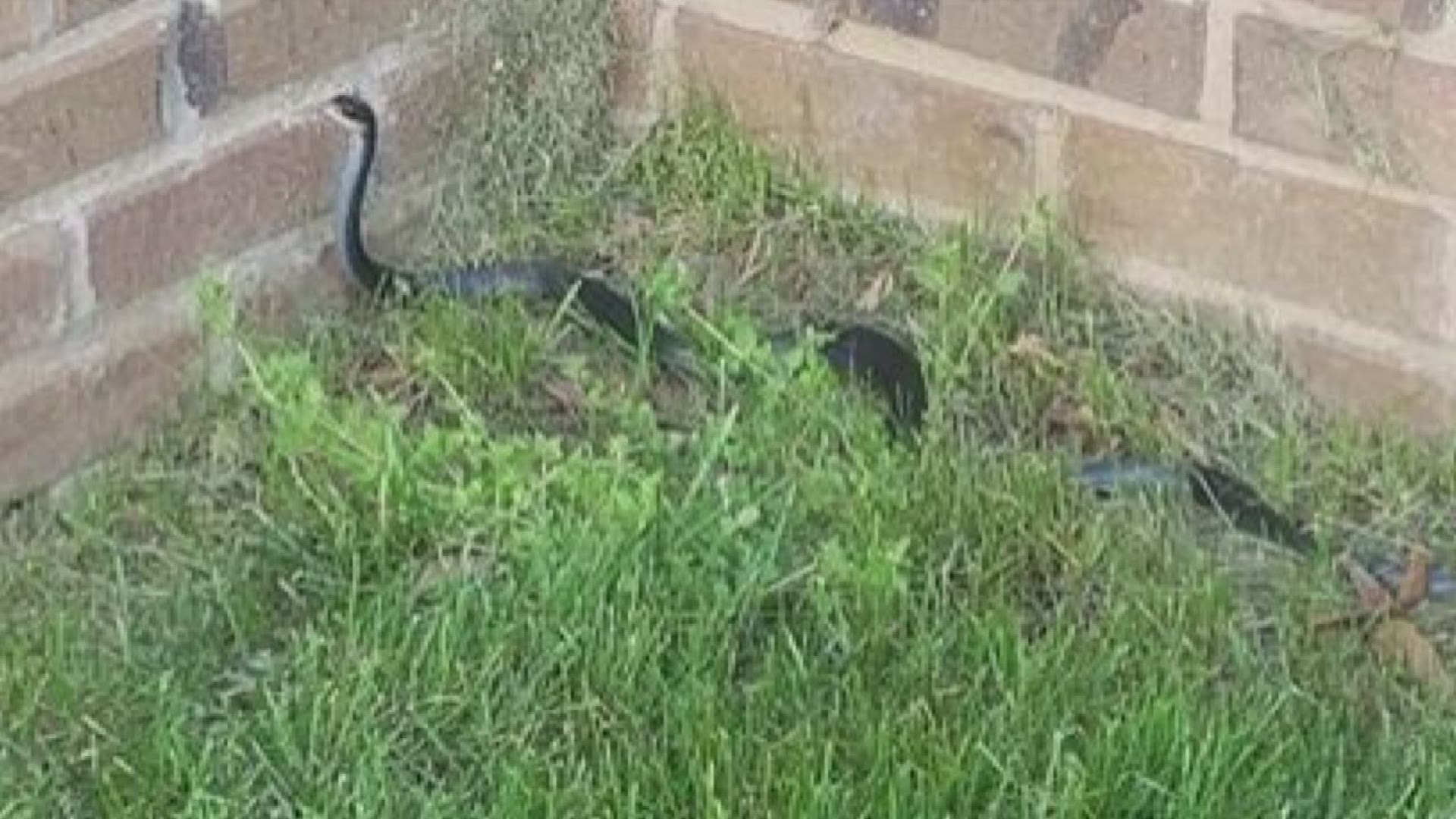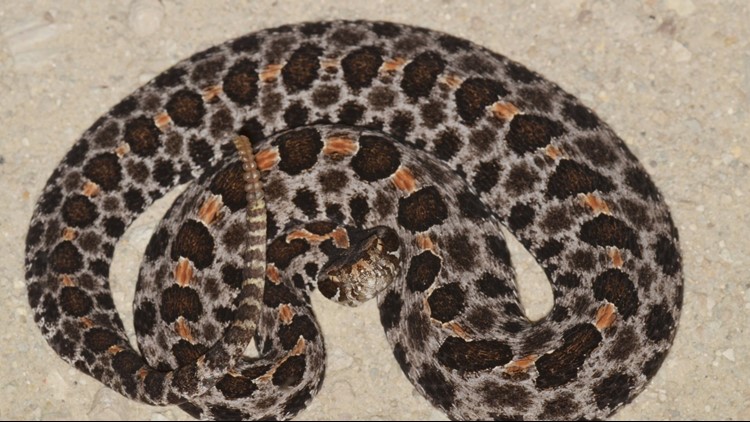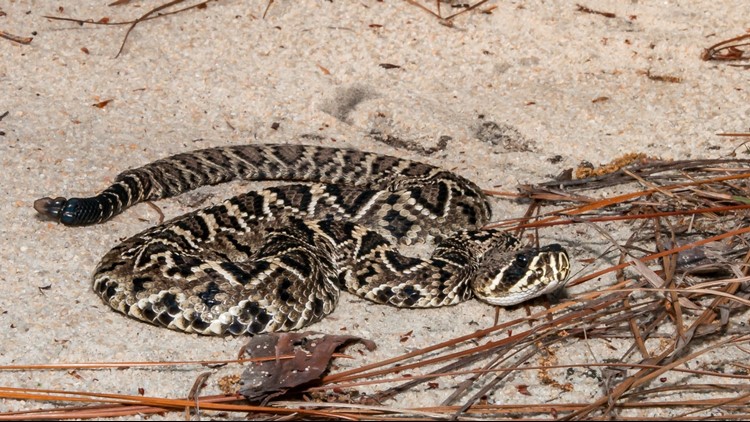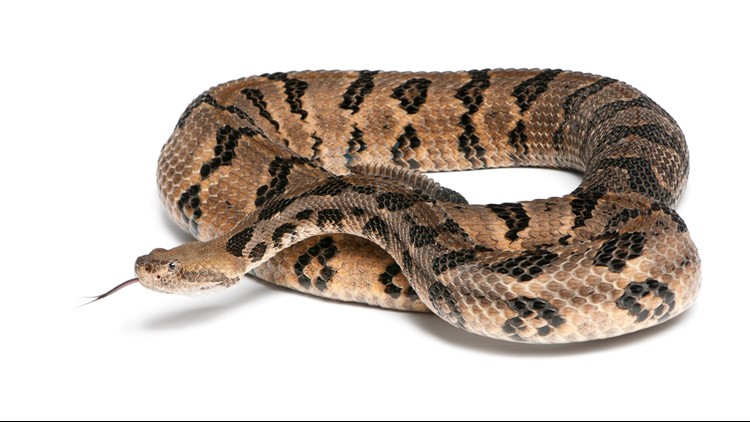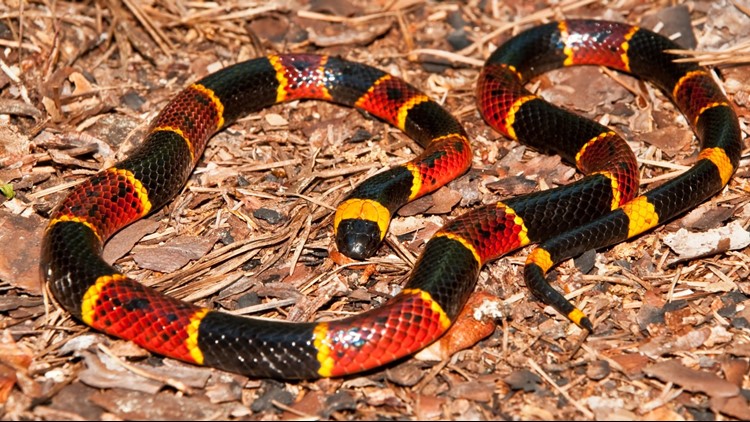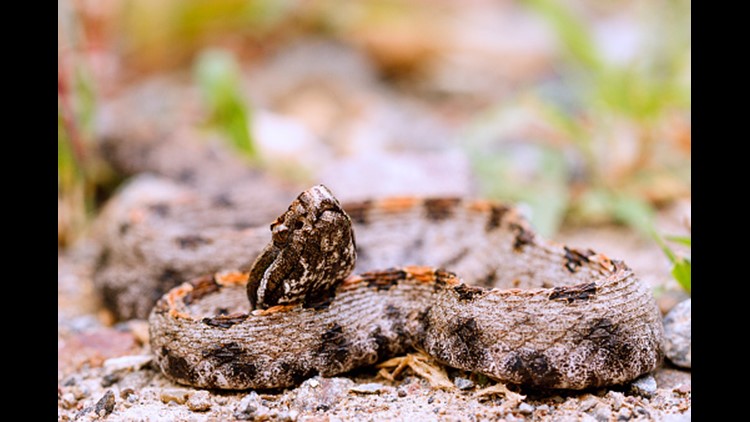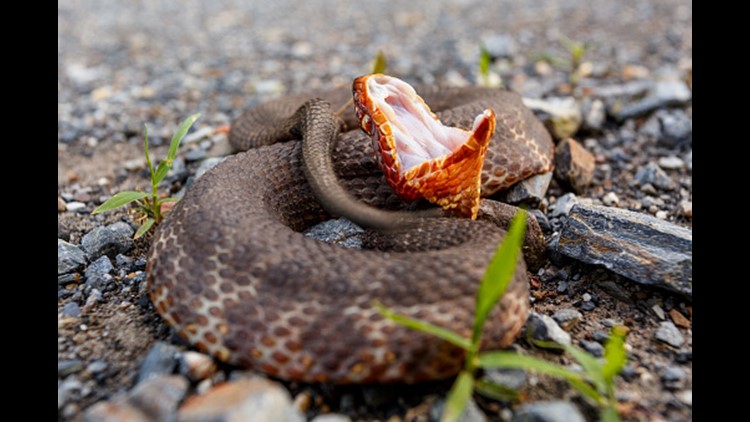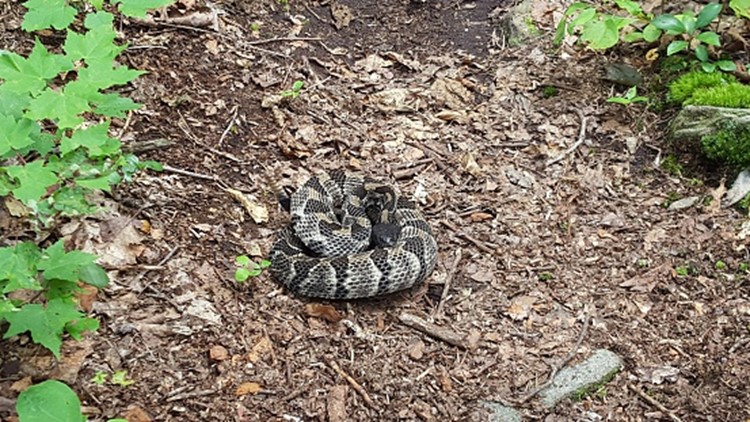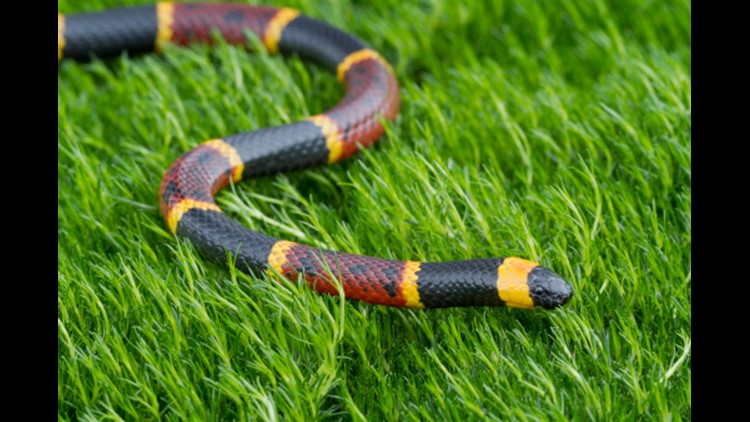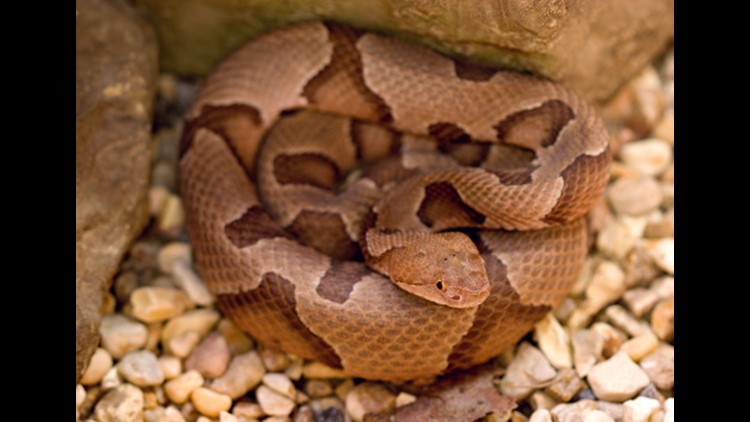CHARLOTTE, N.C. – With temperatures rising and Carolinians enjoying the great outdoors this summer, it’s important to familiarize yourself with the wildlife.
Especially venomous snakes, which are often spotted along hiking trails and near bodies of water across the region. Even in the security of your yard, there’s a chance a venomous snake could be out looking for food or warmth.
So, here’s your quick reference guide to the venomous snakes that call the Carolinas home. In total, there are more than 30 species of snake, but just six are poisonous. Generally speaking, venomous snakes will have a triangular-shaped head with long, movable fangs. Non-venomous snakes typically have a round head, no fangs and no heat-sensory pits on their faces.
Photo guide to the six venomous snakes of the Carolinas
American Copperhead
The copperhead is the most common venomous snake found in the Carolinas. They’re easily recognized with their brown markings with an hour-glass shaped pattern. Like other pit vipers, copperheads have an arrow-shaped head and heat-sensory pits between each eye and nostril to track prey.
According to the Carolinas Poison Center, officials receive 10 times the number of calls about copperhead bites than all other snakes combined. There’s some good news, though. About half of the bites from copperheads result in only mild swelling and pain.
Where they’re found: Everywhere. Always watch where you step when on trails or in leafy areas.
Cottonmouth
The cottonmouth is normally found in the eastern part of North Carolina and South Carolina. These snakes prefer to live in swamps and wetlands with freshwater, but occasionally they’ll be on land.
Unlike most other snakes, cottonmouths aren’t afraid to stand their ground when threatened. They’re typically dark-colored with dark bands and a white, cotton-like inside of its mouth. Adults are usually 3-4 feet long and hunt rodents, amphibians and other snakes.
Where they’re found: Swamps, wetlands, almost any source of freshwater
Eastern Diamondback Rattlesnake
The Eastern diamondback rattlesnake is known for its dark brown to black “diamond” scale pattern and the signature tail rattle. Each diamond is outlined with yellow-to-white bands and like copperheads, a triangular-shaped head.
Eastern diamondbacks are normally found in longleaf pine woods and grasslands in the low country of South Carolina. During the winter, they’ll burrow underground, but once the weather warms up, they’re quite active. Adults are usually about four feet long, and unlike most other snake species, rattlesnakes ambush prey that gets too close.
Venomous Snakes of North Carolina
Bites from any rattlesnake are usually more severe than copperheads or cottonmouths and are considered a medical emergency. These snakes are considered rare according to the South Carolina Dept. of Natural Resources.
Where they’re found: Eastern Carolinas, South Carolina low country
Pigmy Rattlesnake
Pigmy rattlesnakes are small in size (1-2 feet) but they can pack quite the punch with their bite. These rattlers can be found all over the Carolinas and feed on small rodents and frogs.
It can be difficult to hear the tiny rattle on a Pigmy’s tail, so always be aware of your surroundings. They can vary from a dark, charcoal gray color to light gray and pink.
Where they’re found: Everywhere outside the mountains, but they’re usually not too far from a source of freshwater where unsuspecting prey stop to get a drink.
Timber Rattlesnake
The timber rattlesnake is the most commonly found rattler in the Carolinas. Their habitat ranges from the coast to the mountains. If you’re in the mountains, they’re called timber rattlers, but if you’re near the coast, they can be referred to as canebrake rattlesnakes.
Timber rattlesnakes can vary in color from yellow to black with dark bands on their back. Coastal rattlesnakes are typically a light tan color with dark bands or a red stripe running down their back.
Adults are usually around 4-5 feet long and can be found along forest floors. In the mountains, these snakes are usually hunting along streams and valleys, while the coastal canebrake rattlesnakes hunt near wooded bluffs near rivers and swamps.
Where they’re found: Everywhere, but usually near sources of water and wooded areas. These snakes like to hide inside tree stumps and wait for their prey to approach.
Coral Snake
Coral snakes are native to the South Carolina low country, but they are considered rare. Coral snakes belong to the elapids family of snakes, which includes some of the deadliest snakes in the world, such as cobras and mambas.
This is the only venomous snake in the Carolinas that isn’t a pit viper. Adults are usually about two feet long and have bright red, yellow and black bands down the length of its body. These are often confused with harmless king snakes, but as long as you remember “Red touches yellow, kill a fellow” and “red touches black, venom lack,” you’ll know the difference. Also, a coral snake’s nose is always black.
Where they’re found: Anywhere, but they aren’t common in any single area. These snakes are very secretive but are spotted most frequently in loose, sandy soil.

